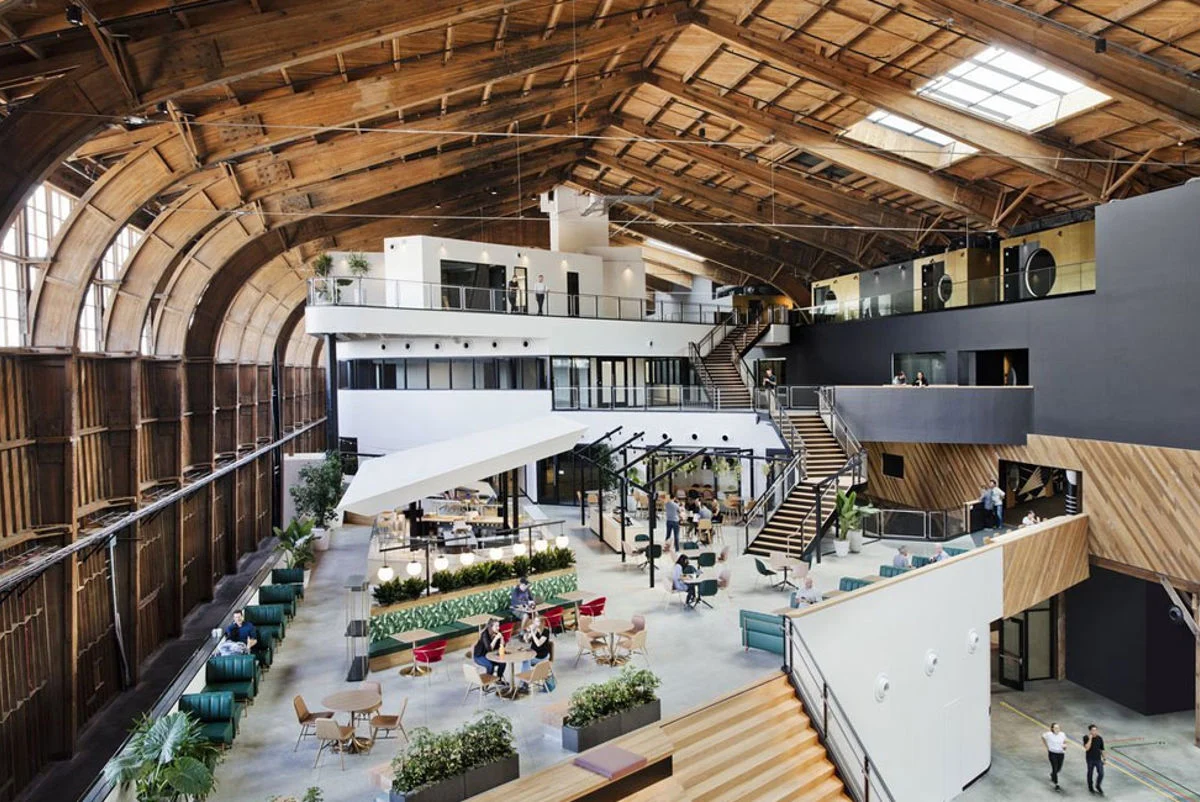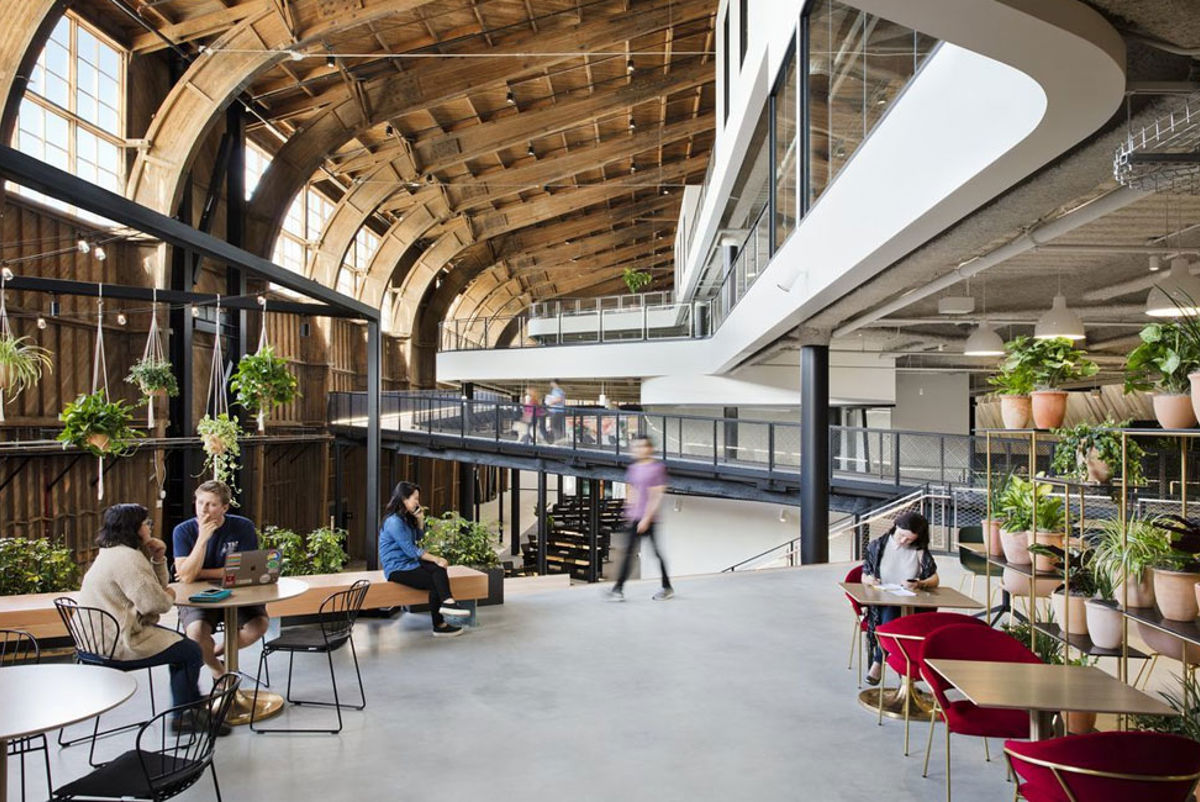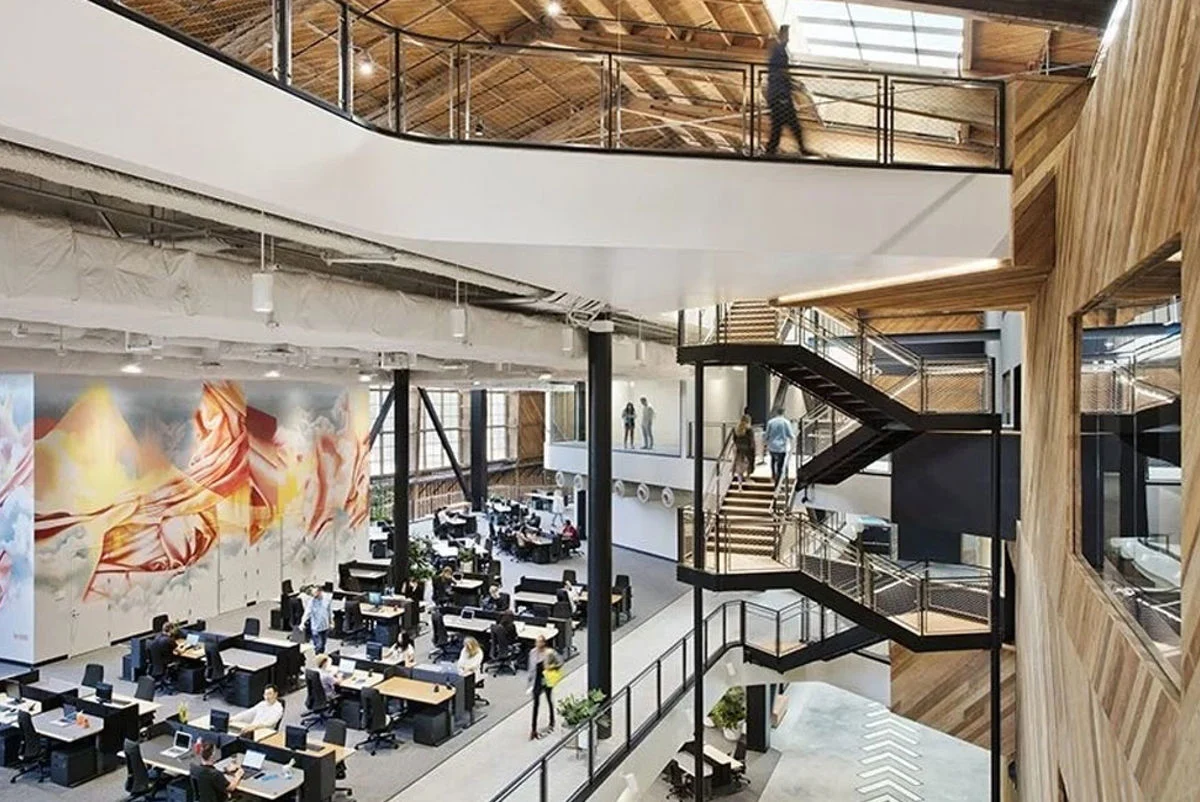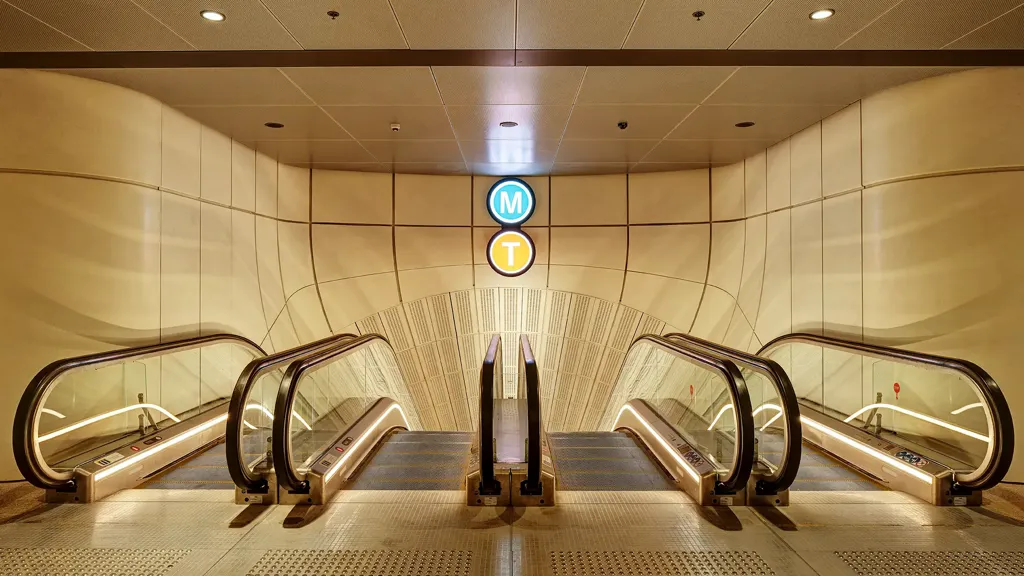What we delivered
-
Arup transformed the historic Spruce Goose Hangar into four storeys of modern office space for Google.
-
Our structural team implemented a strengthening retrofit to the wood structure to meet seismic requirements.
-
The structure’s central ‘spine’ was rebuilt using steel and concrete and later reclad in the historic timber.
Get in touch with our team
Google chose this historic building – the place where Howard Hughes built the amphibious timber aeroplane during World War II – to create a modern office space.
Being constructed almost entirely from wood, the building presented fire and life safety concerns while having many conservation-related constraints on rehabilitation. To solve the project's challenges, Arup came up with several creative solutions to give the Spruce Goose hangar new life.
Our structural team implemented a strengthening retrofit to meet modern seismic code requirements. We strategically placed the earthquake-resisting structural system in the building’s ‘central’ spine using steel and concrete construction that was later reclad in the historic timber. Through innovative solutions, we achieved the same level of life safety protection as under conventional approaches while allowing the wood interiors to remain open to view.
We overcame seismic and fire safety challenges with creative solutions to create modern office space in a historic building with conservation-related constraints. A strengthening retrofit to the existing wood structure achieved compliance with modern seismic safety requirements. Clever fire safety and acoustic interventions created an open-plan office space that is flooded with light but avoids excess noise.
Meeting seismic requirements
Our structural team implemented a strengthening retrofit to the wood structure to ensure it meets modern seismic requirements. We repaired the historic glulam arches and designed new high-strength tie-rods and a flat steel roof truss to tie the historic arches together and limit deformation in case of an earthquake.


Achieving fire safety
The building’s central ‘spine’ was rebuilt using steel and concrete to address fire concerns and later reclad in the historic timber. We strategically placed the mechanical cores and most of the earthquake-resisting structural system in the spine, thus freeing up the remainder of the building for uninterrupted occupiable space.
Our fire engineers’ performance-based design of the smoke control system enabled us to ensure the required life safety protection levels while allowing the wood interiors to remain open to view.
Flooding the space with daylight
With the floor plates of the new additions pulled back from the walls for fire safety concerns, the existing historic windows flood the space with daylight.
In collaboration with the architects, we designed new skylights along the central spine of the building. This provides enough daylight in 64% of the spaces for people to work by for half of annual occupied hours – a feature consistent with the building’s use in the 1940s.


Reducing sound leaks
Events on the ground floor and conversational noise had the potential to leak up over the balconies and affect the open-plan office space.
Our acousticians used advanced 3D analysis to identify where noise on lower floors would impact nearby workspace in this voluminous building. Working closely with the architects, we specified local acoustic absorption and strategically placed enclosed spaces such as conference rooms as obstructions between work zones and areas of noisy activities, eliminating the potential problem.
ZGF Architects / Matt Construction
Projects
Explore more property projects

How can timber help to decarbonise housing construction in Africa?
Gatsby Africa, Kenya

Technical design advice to ensure the functionality and viability of Dubai's new super slender skyscraper
Muraba Veil, United Arab Emirates

Designing Sydney’s first integrated station development
Sydney Metro Martin Place integrated station development, Australia

An iconic landmark shaping the future for office buildings
The Henderson Building, Hong Kong
Get in touch with us
If you'd like to speak to one of our property experts about any of the issues raised on this page or a potential collaboration then please get in touch by completing the form.


